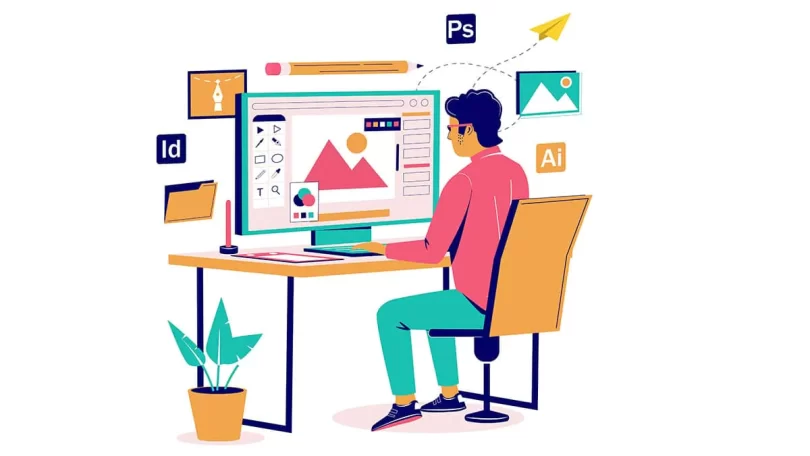In the words of Steve Jobs—”Design is not just what it looks like and feels like. Design is how it works.” The statement underlines the intricate process of finding the right pieces that fit together and completes the puzzle to give us a coherent and meaningful picture.
Graphic design is a fascinating topic that involves a lot of creativity, skill, and knowledge. Thus, graphic designers strive to create a visual solution from abstract ideas using color, shape, size, layout, typography, etc., to match and deliver expectations. These professionals convey a story and establish a brand identity. Therefore, this blog delves into the intricacies of how graphic designers transform abstract ideas into captivating visuals that enhance the user experience.
Conceptualization and Ideation
Table of Contents
The creative odyssey commences with the spark of an idea. Valuable brainstorming sessions require designers to explore concepts that align with the project’s core objectives. At this point, a clear understanding of the target audience and project goals is imperative. Mood boards, sketches, and mind maps serve as navigational tools, guiding the visual direction.
Designers draw every thought on the whiteboard to explore different avenues in proceeding with the project. A professional graphic design services company will also follow this approach to accomplish your target.
Wireframing and Prototyping
Wireframing and prototyping are the stages where abstract ideas start to take concrete shape. Designers use wireframes to sketch out the layout and structure of the design, creating a blueprint for how it will look and function.
Prototypes are interactive mock-ups. It is a real-world simulation of how users interact and navigate the design. Prototyping makes it more realistic and testable. Tools like Adobe XD and Sketch help designers create wireframes and prototypes quickly and easily, which are essential for developing a successful design.
In layman’s terms, it refers to the skeleton of your design. Any feedback here is of immense value.
Design Development
The design development phase is where the visual elements come to life. Designers carefully select color palettes, typography, and imagery that reflect the core principles of the project. Using consistent visual language throughout the design ensures that it matches the brand identity and tone. This also helps create icons, buttons, and other graphics that are both functional and attractive.
Some of the crucial aspects of this stage are as follows:
- The design development phase is also known as the visual or graphic design phase.
- The design development phase is usually done after the wireframing and prototyping phases, which are the stages where abstract ideas start to take concrete shape.
- This phase involves applying the design principles and elements to create a harmonious and compelling design. Some design principles are contrast, alignment, balance, hierarchy, repetition, and white space. While color, shape, line, texture, and typography are design elements.
- The design development phase requires close collaboration between the designers and the clients or stakeholders.
Iterative Review and Feedback
The design journey hinges on iterative refinement. Designers work closely with developers, project managers, and clients to ensure the visual elements blend seamlessly with the product’s functional features. These professionals use various tools for collaboration, depending on their needs and preferences, to bridge the gap between the vision and execution.
By leveraging creative design services, you can ensure that design choices meet user needs, functional specifications, and overall project goals. Moreover, the feedback loops further guarantee that progress is project is on track and progressing toward its intended outcome.
Finalization and Handoff
The culmination of the design process is the final stage. Designers ensure pixel-perfect accuracy by polishing every design aspect and touching upon everything. From testing the design responsive for different devices and screen sizes to enhancing the aesthetic appeal, designers ensure everything matches the project requirements.
Once the draft is approved, the designers hand the design to the developers for implementation. The success of this stage lies in the seamless communication and collaborative efforts between the design and development teams.
Final Thoughts
Graphic design emerges as a potent bridge between innovation and user engagement in the IT and software realm. With a meticulous journey spanning conceptualization and ideation to fruition, graphic designers bring ideas to life. As a result, the users have a lasting visual impression.



